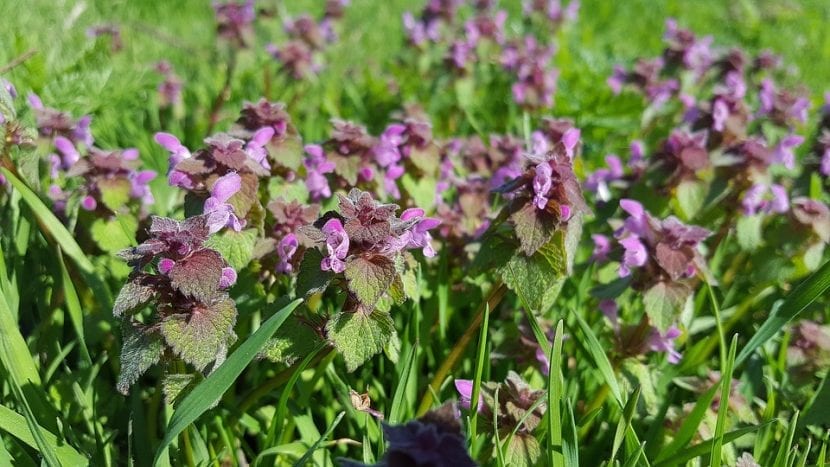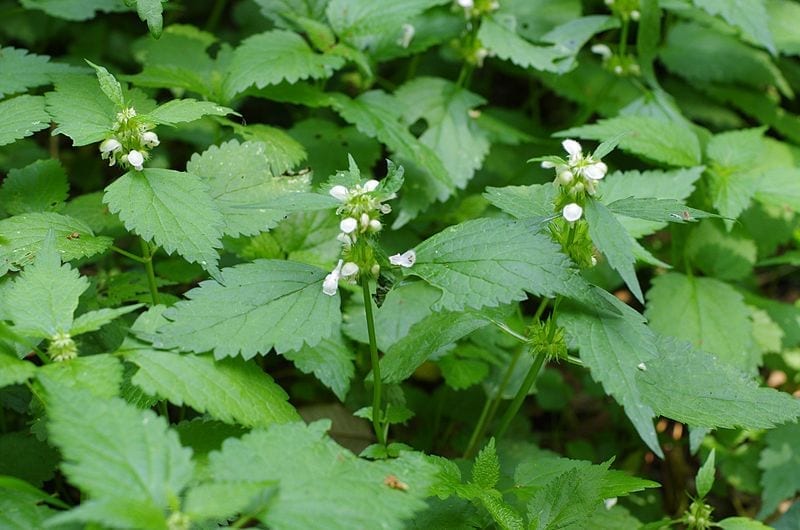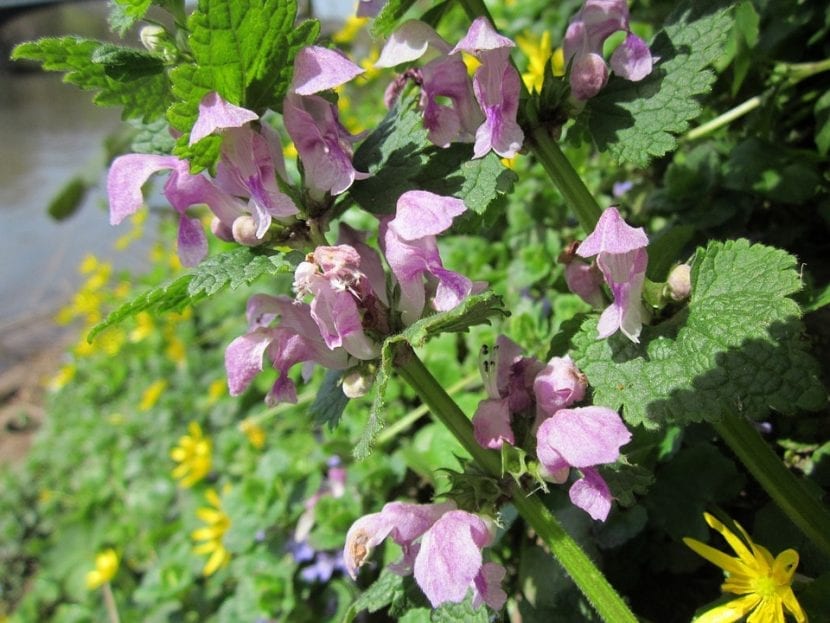
Lamium purpureum
Plants of the genus lamium They are herbs that grow and multiply very fast. Many of them produce flowers that, although small, have great ornamental value; and as the size they reach once adult is small, its cultivation in pots is totally indicated.
So if you want to know how to take care of them so that they can give you flowers every season, do not hesitate to continue reading.
Origin and characteristics

Lamium flexuosum
Image - Wikimedia / Nordschitz
The Lamium are herbaceous and rhizomatous plants native to Europe, Asia and North Africa. The genus is made up of some 30 accepted species, although more than 300 have been described. They can be annual or perennial, depending on the variety. The most popular are:
- Embrace Lamium: known as little shoes, bunnies or tame nettle, it is an annual creeping plant native to Eurasia that reaches 25cm in height.
- lamium album: it is a perennial herb native to Europe that reaches 50cm in height. It is very similar to the common nettle (Urtica dioica), except for the stinging hairs.
- Lamium maculatum: It is a herbaceous native to Europe and temperate Asia known as dead nettle, chicken foot, spotted lick, spotted nettle or fetid nettle. It grows to a height of about 40-60cm.
- Lamium purpureum: it is an annual herb native to Europe. It grows to a height of approximately 30-40cm.
What are their cares?

Lamium maculatum
Would you like to have one copy, or several? Take our advice into account:
- Location: it must be outside, in full sun.
- Earth:
- Garden: grows in cool, moist soils.
- Pot: universal growing substrate.
- Irrigation: very frequent, it is necessary to avoid that the earth dries up.
- Subscriber: not necessary, although if you want you can pay with ecological fertilizers once a month.
- Pruning: you don't need it.
- Multiplication: by seeds, in spring.
- Rusticity: it depends on the species, but in general it does not resist frost.
What did you think of the Lamium?